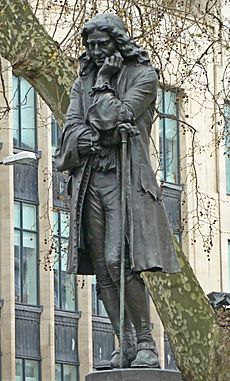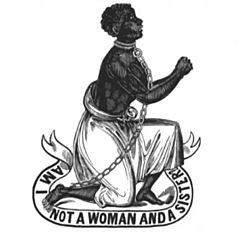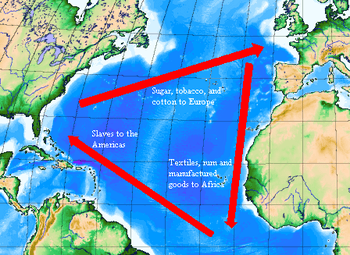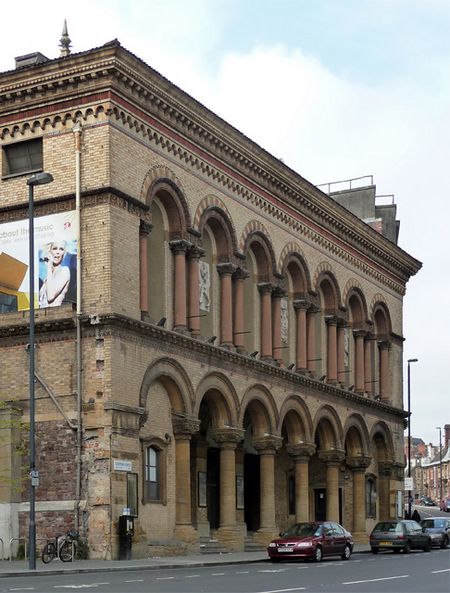Bristol slave trade facts for kids

Bristol, a port city in south-west England, played a big part in the transatlantic slave trade. This trade involved moving enslaved people across the Atlantic Ocean. Bristol's involvement was especially strong in the 17th and 18th centuries. This was because the city's merchants used their location to get involved. It is believed that Bristol merchants traded over 500,000 enslaved African people.
Contents
Bristol's History with Slavery
Bristol is located on the River Avon in the South West of England. It has been an important place for sea trade for hundreds of years. Even in Anglo-Saxon times, slaves were sent from Bristol to Ireland. This older slave trade was stopped after a strong campaign by church leaders.
Bristol's biggest involvement in the slave trade was between 1730 and 1745. During this time, it became the main port for slaving ships. Bristol's port helped transport and made money from half a million enslaved people. In 1750 alone, ships from Bristol carried about 8,000 enslaved Africans. These people were sent to the British Caribbean and North America.
The Transatlantic Slave Trade
How Bristol Joined the Slave Trade
From 1672 to 1698, a London-based company called the Royal African Company controlled all trade between England and Africa. Only their ships could trade for anything, including enslaved people. Enslaved people became very important. This was because British colonies in the Caribbean and Americas needed cheap workers. These workers were forced to labor on sugar, rum, tobacco, and cotton farms.
The Society of Merchant Venturers in Bristol was a group of powerful merchants. They wanted to join the African slave trade. After a lot of pressure from them and other cities like Liverpool, the Royal African Company's control was broken in 1698. As soon as this control ended, Bristol began its part in the trade. It's thought that some illegal trading happened even before this.
The first "official" Bristol slave ship was likely the Beginning. It was owned by Stephen Barker. This ship bought enslaved Africans and took them to the Caribbean. The journey across the Atlantic was very harsh. It is estimated that about half of the enslaved people died during the trip.
Bristol became one of the largest centers for the transatlantic slave trade between 1725 and 1740. During this time, profits from trading enslaved people were estimated to be 5-20%. One estimate suggests that Bristol traders brought over 500,000 Africans into slavery. By the 1730s, about 39 slave ships left Bristol each year. Between 1739 and 1748, there were 245 slave voyages from Bristol. This was about 37.6% of all British slave trade. Later, Bristol's share dropped to 3.3% of the trade in Great Britain. Meanwhile, Liverpool's share grew to 62%.
How Many Enslaved People Were Traded?
It is estimated that 2,108 slave voyages left Bristol between 1698 and 1807. Each ship usually carried more than 250 enslaved people. This means that merchants in Bristol were responsible for shipping over 500,000 enslaved African people. They were sent to the Caribbean and North America.
The Triangular Trade Route
The triangular trade was a route used by slave merchants. It connected England, Northwest Africa, and the Caribbean. This route was active from 1697 to 1807. Bristol ships traded their goods for enslaved people from places like south-east Nigeria and Angola. These areas were then known as Calabar and Bonny.
Bristol ships exchanged goods like copper, brass, and gunpowder. These items were often given as payment for shares in the voyages. The ships then sailed to places like St Kitts, Barbados, and Virginia. They supplied English colonies that needed free or cheap labor for sugar and tobacco farms.
Bristol ships also supplied the colonies with many other goods for the farms. These included guns, farm tools, food, soap, and clothes for the enslaved people. The British economy benefited greatly from this trade. Some Bristol slave merchants also imported goods from the farms. These goods included sugar, rum, indigo, and cocoa. These products were used in local industries like sugar refining and chocolate making. These industries employed thousands of people in Bristol.
Bristol's Legacy
Racism and Its Impact
The slave trade helped create racist ideas. These ideas were used to try and justify slavery. Stories of slave rebellions and attacks on farm owners were printed in British newspapers. These stories spread the false idea that Black people were violent. Such stories affected how Black people were treated in Bristol for a long time.
For example, in the 1960s, the Bristol Omnibus Company only hired white bus drivers. This led to the Bristol Bus Boycott in 1963. Many people from the Caribbean, known as the Windrush generation, came to the UK from 1948. A lot of them settled in St. Paul's in Bristol. They faced a lot of unfair treatment when they arrived.
Street Names and Buildings
Many street names in Bristol remind us of its past in the slave trade. Examples include Guinea Street, Jamaica Street, and Codrington Place. Wealth from the slave trade was used to buy land, build cultural places, and improve ships in Bristol. The Theatre Royal, one of the oldest working theaters in the country, was built with money from wealthy people who benefited from the slave trade.
Some buildings and schools were named after people who made money from slavery. For instance, Colston Hall, Colston Girls School, and Colston Primary School were named after Edward Colston. He was a famous Bristol-born slave trader and a senior manager of the Royal African Company. Colston Primary School was recently renamed Cotham Gardens Primary School.
Georgian House, Bristol was built for John Pinney. He owned several sugar farms in the West Indies. Pinney lived on Nevis for many years. In 1783, he moved to Bristol. He brought two enslaved Black people with him: Fanny Coker and Pero Jones. Pero was 12 years old when Pinney bought him in 1765. Pero's Bridge, a footbridge in Bristol, is named after Pero.
Money and Wealth
Many people in Bristol made money from the slave trade. They could invest in slave voyages, which sometimes had up to eight investors. People also worked in industries that supported the slave trade. This included making goods sent to Africa and the farms. They also worked on the ships that carried enslaved Africans and local goods. And they processed the goods that came back from the farms.
It is thought that by the late 1780s, Bristol earned £525,000 each year from these activities. This was after Bristol's busiest time in the slave trade. So, the earnings were likely much higher earlier in the 18th century.
While Bristol's economy benefited, the ship owners and merchants made the most personal wealth. These merchants were part of the Merchant Venturers Society. Because they were powerful leaders in Bristol, they successfully fought against efforts to stop the slave trade in the late 1700s. They wanted to keep their power and wealth.
The slave trade in the British Empire was officially stopped in 1807. However, slavery itself was not outlawed until 1834. After the United Kingdom of Great Britain and Ireland's Slave Compensation Act of 1837, slave owners were paid for losing their "property." Bristol Museums state that farm owners in Bristol claimed over £500,000. This would be about £2 billion today.
In Popular Culture
The folk music group Show of Hands wrote a song called "The Bristol Slaver" about this topic.
Museums and Education
M Shed in Bristol has a gallery called 'Bristol People'. It explores Bristol's role in the transatlantic slave trade. It shows how the slave trade affected public institutions in Bristol. The museum also looks at the anti-slavery movement. It connects this to modern protests like the Bristol Bus Boycott. M Shed has workshops for students to learn about the history of slavery in Bristol.
New Room, Bristol has an exhibition about John Wesley. He was an abolitionist, meaning he worked to end slavery. The exhibition shows how the Methodist church responded to slavery.
See also
- Dinah Black
- John Pinney
- Slave Coast
- Lancaster slave trade
- Role of Nantes in the slave trade





